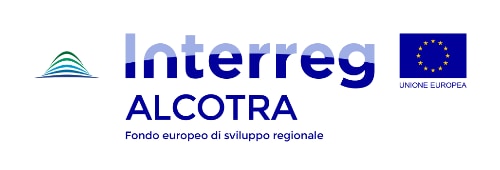STROLLING THROUGH THE HIGHEST VINEYARDS IN EUROPE
We are at the foot of Mont Blanc, around 1,000 meters above sea level: this itinerary unfolds in the communes of Morgex and La Salle , winding through the arbors of Prié Blanc, the only native white grape variety of the Aosta Valley. Witnessing heroic viticulture that allows it to reach maturity in climatically and environmentally difficult conditions, up to more than 1,200 meters above sea level, the vine is cultivated here on low arbors so that it can make the most of the warmth of the soil, even if this makes the work of the wine growers even more complicated, and strictly manual only!
We leave from the main town of Morgex, the historic capital of Valdigne (as this area of the Upper Aosta Valley is called) and a vital village that developed along the route of the ancient road that climbed to the Little St. Bernard Pass as far back as 2,000 years ago. The bus stop is near the church , and visiting here is a must to discover its treasures, from the splendid bell tower to the great Baroque altar, from the colorful 15th-century frescoes in the north aisle to the parish museum of sacred art.
You then proceed in the direction of the vineyards, clinging to the sunny side of the valley, and the dirt road allows you to cross them while observing them closely to reach La Piagne, a wonderful 19th-century vineyard restored as part of the Interreg project “Route des Vignobles Alpins,” a true monument to heroic viticulture, in front of which you stop in admiration. After a short flat section, the road descends again and crosses the village of Lavancher, which takes its name from the avalanche that laps it every winter, and then climbs back up to Villair with its expertly restored stone houses and the beautiful chapel dedicated to St. Roch, a sad reminder of the plague period. Once past the Colomba stream, the climb is rather steep but short and allows you to reach the flat Tzantamerla trail that follows the route of a “ru,” an ancient irrigation canal dug into the ground to bring water from the stream to the crops of La Salle. You leave the flat path at the fork that climbs toward the hamlet Chatelard, and already you can admire the beautiful medieval cylindrical donjon, the only survivor of the ruined castle of the lords of the same name. From here, we take the paved road back downhill to the bend where the so-called “hunters’ path” begins, which, with a pleasant up and down in the woods, leads to the prestigious seat of the town hall of La Salle, Maison Gerbollier , originally an old fortified house with agricultural outbuildings belonging to a wealthy local family. Remember, there is also a bus stop here if you wish to break the itinerary and return to Morgex. Returning to the paved road, we ascend to the hamlet Ecours, recognizable from afar thanks to its medieval tower, but approaching it also reveals the beauty of the frescoed facade of its chapel. Among the depictions of various saints, one certainly cannot miss that of St. Christopher, protector of wayfarers and pilgrims, who are numerous along the roads of the Aosta Valley, a land of transit par excellence. An admiring glance at the frescoes and then, skirting the chapel, take the path that leads, through a grove and the cool waters of a small stream, to the hamlet of Echarlod. Down, at the bottom of the descent and passing in front of the d’Aragon stronghold with its prestigious past, we find ourselves on the asphalt road and, descending towards the hamlet Cré, we take a dirt path finding the Prié Blanc vineyards that also here, as in Morgex, give rise to the very fragrant Blanc de Morgex et de La Salle . It is a must to lift your gaze. The view of the arbors with Mont Blanc in the background is truly splendid! Leaving the vineyards, we continue this journey to discover ancient villages by climbing up to Moras, Chez les Beneyton, and Echarlod with their washhouses, ancient bread-baking ovens, and the memory of the slow rhythms of pastoral life in the past. Then, always continuing on level ground, we return to the main town of La Salle, this time heading down the main street that leads to the majestic parish church of San Cassiano. Rebuilt in the 19th century, the church has an ancient heart, just like the dances of the “Badoche” in the churchyard amid colorful ribbons and period costumes for the patron saint’s festival, August 13. After visiting the church, the road continues down, winding between the village’s houses. Mont Blanc is constantly in front of us, with its imposing bulk, watching us from the height of its 4810 meters as we descend again in the direction of the Dora Baltea. Just along the banks of the river, near the artificial lake formed by the La Salle dam, we can discover the Marais Nature Reserve , created to protect and enhance this wetland, which among the reeds, is home to numerous species of aquatic birds. From the dam, the route continues on the opposite side of the valley, the orographic right, along the bike path route that still offers some access to bird-watching stations and then continues to the hamlet of Pautex di Morgex. Here, too, the old oven towers in the center of the village, which the locals occasionally turn on to bake traditional black bread and fragrant flantse (or creichen), sweet loaves of bread that taste like butter and are covered in caramelized sugar. We dip into the past by spotting some old farm tools among the beautiful stone houses as we climb toward the chapel dedicated to Saints Peter and Paul. We are back in Morgex, and our loop trail is about to close: where there is now the mineral water bottling plant, until the mid-20th century, the production activity linked to the exploitation of the anthracite mines of La Thuile was fermenting: the extracted material arrived by cable car and here was selected and loaded onto the rail cars that would transport it to the Aosta steelworks, passing over the iron bridge that still makes a good show. A dedicated page of the town’s history, it bypasses the Dora Baltea and allows visitors to access the Reading Park , a feather in the cap for the Morgex community, where young and old can play reading and read while playing. Cycling is prohibited inside the park, but bikes are in hand; even cyclists can cross it toward the sports area. Why not stop for a while to try the barefooting trail? Walking in nature barefoot gives a new sensory experience, but at the same time, it also makes you feel a little bit like a child again…and nearby, where there is the water sports center, a very adrenaline-pumping adventure can also begin with rafting down the tumultuous waters of the Dora Baltea!
Returning toward the village, we once again greet, from a distance, the vineyards clinging to the mountain and retrace the village’s central street that suddenly opens onto the small square in front of the imposing Tour de l’Archet , with its noble past and now home to the prestigious Sapegno Foundation.
After getting to know them up close and learning to love these heroic vineyards, a tasting of the nectar obtained from them is a must: the various producers will know how best to tell you about the Blanc de Morgex et de La Salle, which they make from these heroic grapes with passion, dedication, and expertise. Whether it is presented as a still white wine, sparkling wine, or ice wine, it cannot fail to be paired with the other delicacies this territory offers us: here, the variety of flavors and aromas is at home! White wine, cured meats, cheeses, honey, trout, fruits, cereals, medicinal herbs, liqueurs, saffron, and typical sweets… Morgex and La Salle producers are waiting for you!
Technical data on the route:
Length: 18.5 km
Positive elevation gain: 469 m
Negative elevation gain: 481 m
Minimum altitude: 881 m
Maximum altitude: 1086
https://www.discovermorgex.it/eccellenze-locali-morgex-valle-d-aosta/
https://www.lasallemontblanc.com/aziende-agricole/

